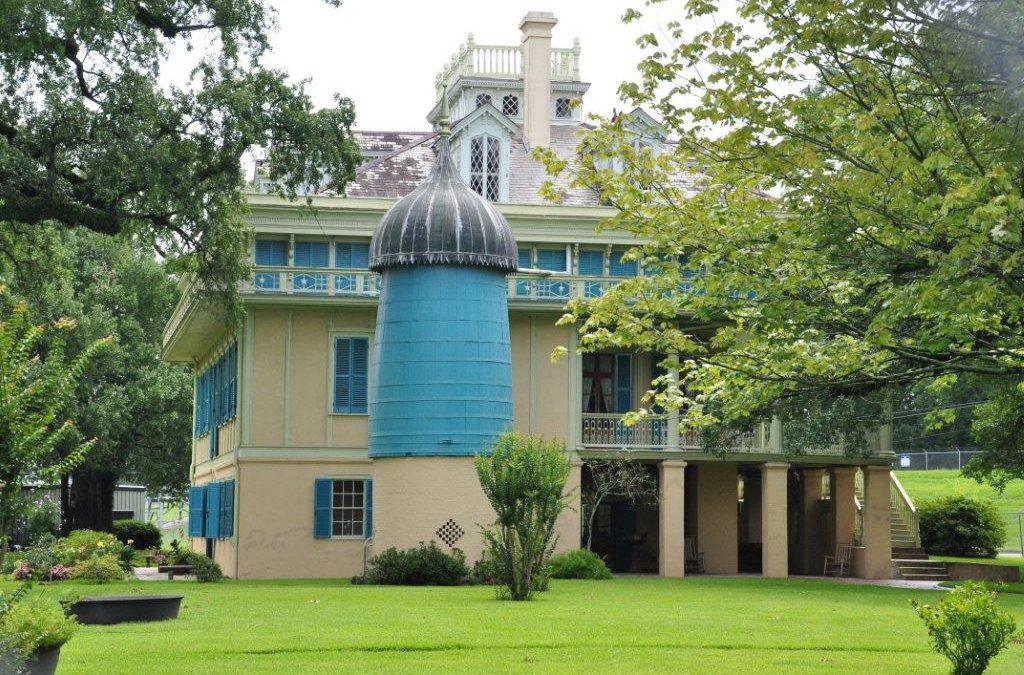
by admin | Jun 19, 2012 | Cajun Country, River Road
We recently took to the road and set off on a decent hour (give or take) drive to Thibodaux. I came prepared with snacks, drinks and a movie for the allotted time, and the trip would have been perfect except for one small flaw. The Hale Boggs Bridge crossing the Mississippi River was closed. How we missed this crucial piece of information was beyond me, but here we were, stuck with a last minute decision to go downriver to the Huey P. Long Bridge or upriver toward the Veterans Memorial Bridge.
Much to our children’s chagrin, we chose the scenic River Road route upriver to Gramercy. It brought back memories of the road trips we took when we younger, fresh out of college, sans children and with lots of time to wander freely. Unfortunately, children scoff at nostalgia. But we made the most of it and discovered parts of the state we’d never seen before, and as with all memories, I’m sure to only remember the good parts of the trip!
The detour began with a sudden stop at the stunning St. Charles Borromeo Catholic Church. Although not open, the expansive grounds and beautiful church and school begged to be photographed–if only it wasn’t raining. For years, the “Little Red Church” was a welcome sight to steamboat captains traveling the Mississippi River to New Orleans, alerting them to the end of their journey.
 |
| Bonnet Carre Spillway |
Only a bit farther up the road, we encountered the first of several plantations we would see on this trip. Ormond Plantation, built around 1790, is brilliantly restored and open for tours detailing its storied past.
River Road takes a sharp right turn at the Bonnet Carre Spillway, a location made famous by the floodgates opened here whenever the Mississippi River comes dangerously close to topping its levees. I’d seen it on TV and in pictures hundreds of times, but never in person. The photos don’t do justice to the vast complex, and it was a startling sight to see just traveling along the road.
As River Road enters the Spillway, you descend into miles of open fields, giving the impression you’ve been transported to the country roads of Kansas. One man, who was throwing a stick to his dog, looked so out of place I had to check in the rearview mirror to make sure he was really there. It’s gone before you can shake the eerie feeling, and the road continues on as if nothing had changed.
 |
| Scheeler’s photo of Ford’s auto factory |
Although only separated by a levee from the Mississippi River, you would never know the swiftly flowing water was right next to you. It’s largely hidden from view, yet strangely connected to the land via large tubes crossing over the road. These link to the countless refineries and factories lining much of River Road, creating a foreign, but oddly interesting, landscape.
I remember traveling River Road at night and seeing the factories ablaze with lights–tiny towns functioning independently from others around them. There was an artist by the name of Charles Sheeler hired to photograph and paint similar factories and show off their inner beauty. Through his eyes, the maze of pipes became exquisite pieces of architecture. If you squint really hard and bury the innate feeling of driving “Cancer Alley,” you begin to see his perspective.
This is what I was contemplating when we came upon San Francisco Plantation, a lavishly ornate and boldly colorful mansion that inspired Francis Parkinson Keyes to write “Steamboat Gothic.” The house and grounds were amazingly pristine, yet out of place sandwiched beside another factory.
 |
| Godchaux-Reserve House |
We saw other plantations and extremely old homes sitting neglected and slowly melting back into the dirt and trees on the side of the road. There’s no telling how many of these structures have been lost to time, and by the looks of it, many of the ones we recently saw won’t be around for much longer. Some though, like the Godchaux-Reserve House–marked by the locomotive standing on its property–has been taken on by the community in an effort to preserve its structure and importance in history.
So finally arriving in Gramercy, we’re treated to expansive views of the river as we crossed high above its waters. The remainder of our drive south to Thibodaux was fairly uneventful, spent munching on popcorn from the local convenience station while we drove through open fields and torrential rain. As we entered Thibodaux, the flooding stopped as if a faucet had been turned off.
 |
| Wetlands Acadian Cultural Center in Thibodaux |
We drove the town, getting the lay of the land and counting the churches along Canal Boulevard. A sign for the Jean Lafitte National Historical Park directed us along Bayou Lafourche to the Wetlands Acadian Cultural Center. The kids sprinted through the exhibit area, showcasing the lives of the Cajuns, but then became engrossed in playing with the dozens of puppets and kid-sized palmetto hut in the kids’ “Gumbo Room.” Outside, a boardwalk overlooked scenic Bayou Lafourche.
Historic downtown Thibodaux is dominated by the Dansereau House Bed and Breakfast, the crown jewel of the city. The one-way streets through the city are lined with boutiques and restaurants, creating a vibrant yet intimate downtown.
We backtracked slightly out of town to eat at Boudreaux’s Restaurant, which came highly recommended by the Jean Lafitte park rangers. It was a good suggestion as we found plenty of tasty food to dine on, and the wait staff were very tolerable of two, umm, “active” children.
The route home took us along picturesque Highway 1, which parallels Bayou Lafourche, past Nicholls State College to Highway 90. We chose the quicker return route as the rain clouds rose high above us, threatening to let loose at any minute.
 |
| View of Bayou Lafourche |
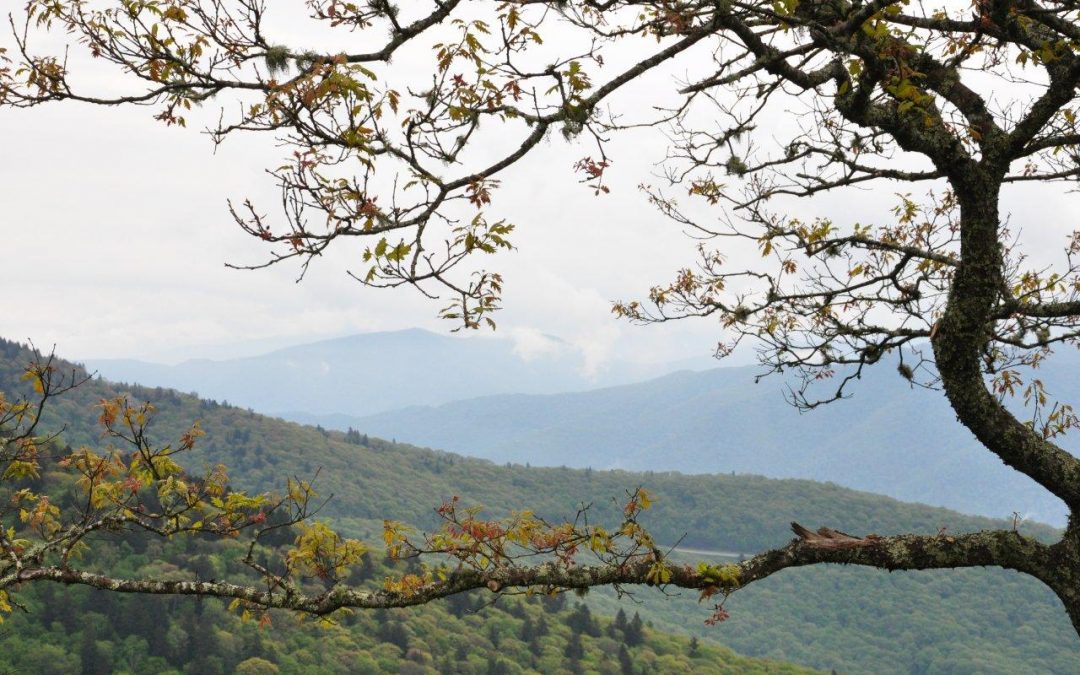
by admin | Jun 2, 2012 | Beyond the State, North Carolina
Occasionally our wanderings across Louisiana lead beyond the state’s border, taking us farther out into the rest of the country. Last week, we rooted our jackets out of the far reaches of the closet and kicked off the arrival of summer heat with a trip to the Smoky Mountains of North Carolina.
We’d been to this area a few times before, staying in cabins or a lodge along the Blue Ridge Parkway. This time, however, we landed a Groupon deal at Balsam Mountain Inn and spent five fantastic days there. The first overnight guests to the three-story inn arrived via railroad in 1908 and carried their trunks up the steep hill to the front porch 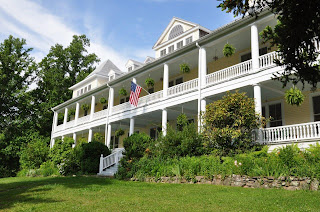
steps.
More than 100 years later, the original 100 rooms have been converted into 50 rooms, each with private bathrooms, but the rustic charm still remained. Rows of rocking chairs graced the first and second story porches, providing a relaxing spot to sip wine and gaze out at the mountains. The inn offered neither TVs nor telephones, but a cozy library and armoires overflowing with puzzles and board games provided hours of entertainment. The kids loved the claw-foot tub and window seats in our third-floor suite, and I looked forward to waking up every morning to a phenomenal breakfast served in their bright and cheery dining room.
Our days were filled with short hikes, picnics beside mountain streams and, of course, bug-filled adventures. Every afternoon coffee cup was recycled as a bug catcher, and by the end of the week, 4-year-old Charles had lined our window seats with tadpoles, snails and butterflies. The cricket had become his best friend and was allowed to sit on his shoulder–walking back and forth across his back, while the salamanders were lucky enough to slither away.
 |
| Abandoned church in Cataloochee Valley |
We explored the far reaches of the national park, driving up and over the mountains to enter the secluded Cataloochee Valley. Once home to a thriving community of 1,200 people, they all left in a mass exodus when the U.S. government began buying up land to form the national park. Today, their homes, churches and schoolhouse stand as quiet reminders of earlier times. Like others before us, we walked through the empty rooms, imagining the children’s laughter that once echoed in the halls. Our hike to one abandoned home led us across small footbridges, a splash through the river bed and down a trail frequented by wild turkeys.
 |
| Waterfall along the Blue Ridge Parkway |
Another day’s adventures brought us to the waterfalls of Deep Creek, where countless locals and tourists were braving the excruciatingly freezing waters to glide down the river in inner tubes. We watched in amazement, comparing our attire of long jeans and long-sleeve shirts to their bathing suits, and shaking our heads, continued on to play beside the peaceful pool at the bottom of Indian Creek Falls.
Outside Brevard, we discovered the Cradle of Forestry–the birthplace of forest conservation in America, and afterwards the kids fed the hundreds of trout growing up in the Pisgah Forest Fish Hatchery down the road. Just beyond Cherokee, a visit to the Oconaluftee Visitor Center, Mountain Farm Museum and Mingus Mill brought a fleeting longing for simpler days, followed by a new appreciation for the conveniences we have today.
On our final evening, we stood at the highest point on the Blue Ridge Parkway and watched the setting sun cast a brilliant glow over the famously hazy mountains. It was a trip to remember and one we’ll most likely take again to break up the long, hot days of a New Orleans’ summer.
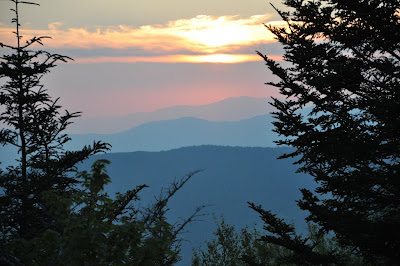 |
| Sunset over the Smoky Mountains |
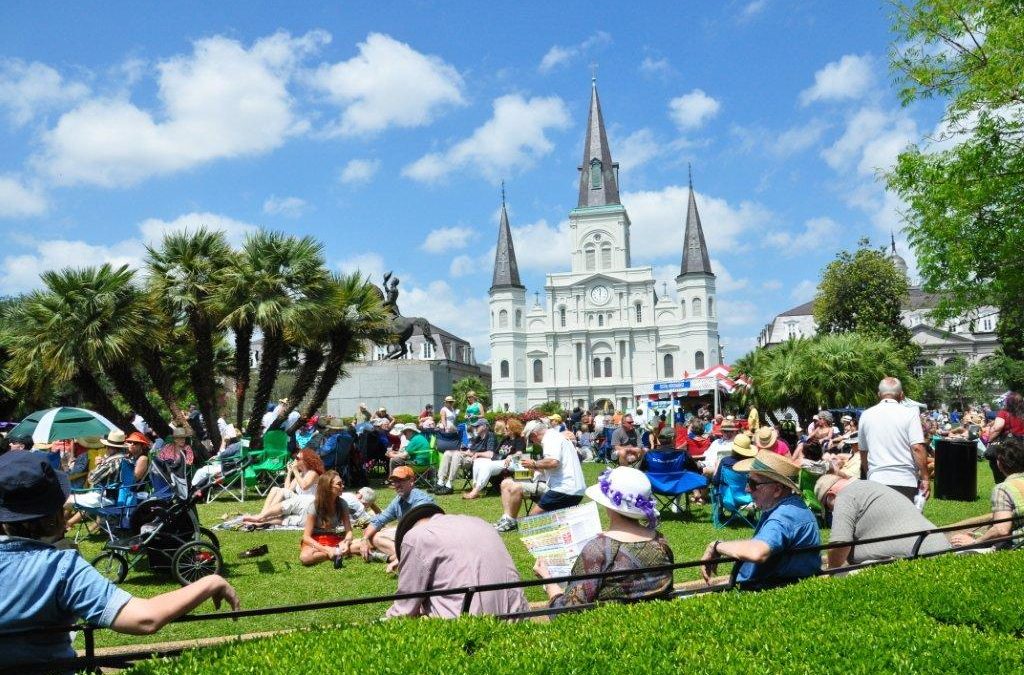
by admin | Apr 17, 2012 | Greater New Orleans
French Quarter Fest, the largest free music festival in the South, is four, packed days of more than 800 local musicians playing on 22 stages throughout the Quarter’s historic streets and waterfront. Now in its 29th year, the event has ballooned into a massive festival rivaling that of the famous Jazz Fest occurring just a few weeks later.
 |
| An iconic horse and carriage tour |
It’s a tricky busy, though, trying to navigate an extremely well-attended festival with two very “energetic” little boys. Gone are the days when we could lounge in a lawn chair under a shade tree in Jackson Square, sipping daiquiris and savoring food from local restaurants while relaxing to a weekend of free music.
This year, we had to be strategic in our festival-going. We arrived early, strolling the nearly empty streets for more than an hour before the music started up and thousands of people seemed to materialize out of nowhere.The horse and carriage tours sauntering along the roads kept the kids’ attention, while we mapped out our route.
 |
| Palmetto Bug Stompers |
Our musical tour began with the classical stage at St. Mary’s Church at the Ursuline Convent, where the first show of the morning was Opera on Tap. We managed to make it through two songs before our oldest decided to try his own rendition of opera singing. Next up was the French Market Traditional Jazz Stage, where the crowd was dancing some fancy footwork to the Palmetto Bug Stompers. The beat was lively and so were the kids, bopping their heads around to the rhythm.
A slow song set our strollers in motion again, and as attention spans lasted through two, maybe three songs at a time, we hopped from stage to stage throughout the day. Luckily, there seemed to be music on nearly every corner, and we didn’t have to walk far to find the next group of toe-tapping musicians and the fans surrounding them.
 |
| Festival-goers dancing in the streets. |
Our path took us from Dutch Alley to Jackson Square, Preservation Hall to the Hermann-Grima House. We grabbed several dishes of food along the way and mostly ate on the run. Despite the lack of time to “savor” the flavors, we still appreciated the tasty delights served up by some of the city’s best restaurants, and our youngest took a particular liking to some grillades and cheese grits produced by K-Paul’s.
 |
| Local artists took advantage of the huge crowds. |
Throughout the day, our senses were captured over and over again, enveloped by the sights, sounds and tastes of an event that can only take place in New Orleans. For one long weekend, the city’s most talented musicians bring to life every steamy street corner, green space and dark, historic building. Meanwhile, the walls and fences are hung with colorful artwork for sale, and the rest of the space is covered in tempting food booths. It’s a chance to discover places you’ve never seen and sounds you’ve never heard, so if you didn’t make it this year, you should mark your calendar for April 2013.
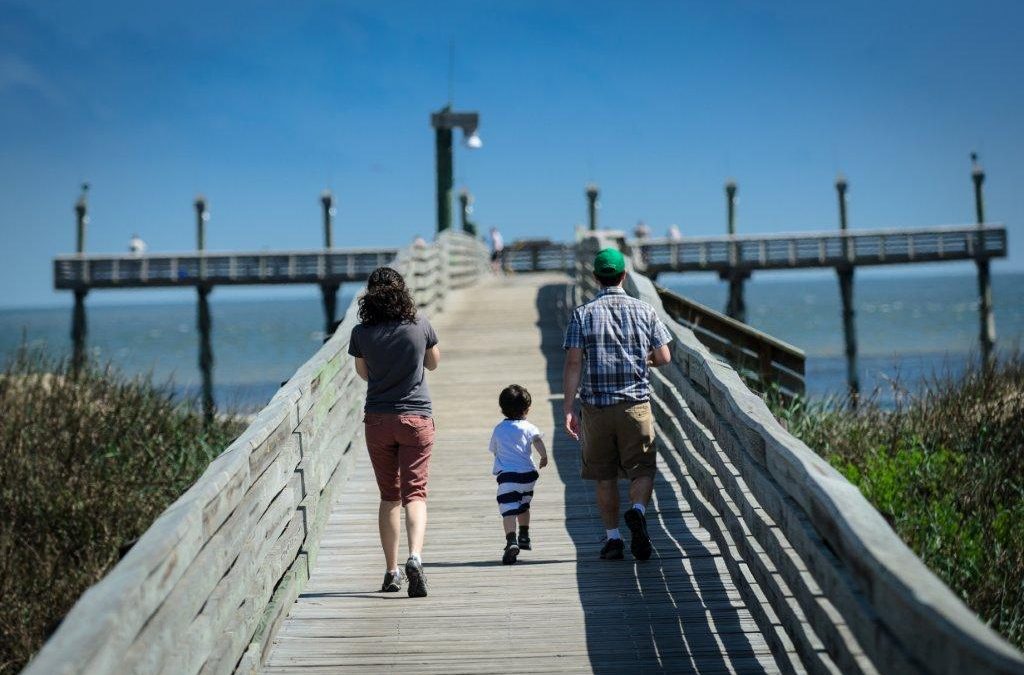
by admin | Mar 27, 2012 | Cajun Country
It’s amazing how much can change in a year. Last April, we visited Grand Isle for the annual Migratory Bird Festival, an event the whole island embraces as residents open their yards to birding enthusiasts. The island was bustling with activity, but some of the key attractions – such as the state park’s beaches – were closed due to tar balls lingering on the sand after the BP Oil Spill. Fast forward to 2012 and the sand is cleaner than ever and children were even playing in the ocean waters.
 |
| “Shrimp Boy” Charlie |
It’s a hefty drive for us – two and a half hours from New Orleans – so we scooted out of the house at 6:30 a.m. to make it in plenty of time for our 9:30 a.m. chartered fishing appointment. Poor August had to hang back with the grandparents, but Charles was giddy with thoughts of his day in the limelight. On the boat, our host Pat Bellanger took us to some of the best fishing spots around the island. It was exhilarating scaling the waves in the Gulf while porpoises played hide and seek around us.
Our guide offered us prime views of Fort Livingston, where Charles’ imagination was captured with thoughts of buried pirate treasure. I initially wondered if the trip might be too much for the four year old, but he reveled in being our “shrimp boy” – providing bait whenever needed – and gained a new best friend in the striped sheephead we reeled in. (I didn’t have the heart to tell him that the fish he was singing to “sleep” was soon going to be chopped up for our dinner.)
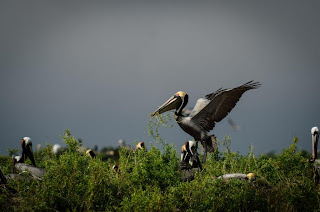 |
| Pelican Rookery at Queen Bess Island |
Before heading back to dock, we were treated to a spin around Queen Bess Island, better known to the locals as Bird Island. It was here, amidst hundreds of nesting brown pelicans, that we caught site of hot pink wings flapping in the wind and I saw my first of many roseate spoonbills. These amazingly colorful birds did their best to hide within the recesses of the island, while the pelicans made a great showing of flying about, boldly flaunting their triumph over the oil that once threatened to destroy them and their habitat. It was a place I never knew existed, and its brilliance made me question what else I have missed seeing in the world.
Back on land, a voracious appetite had overtaken us, and we tried the poboys (our favorite traveling food) at the Starfish Restaurant. They loaded us up with seafood, and we left with full bellies and a renewed urge to see more of the island.
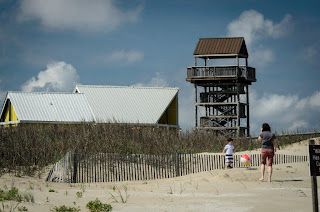 |
| Grand Isle State Park |
The day was getting warmer when we entered Grand Isle State Park, and we tossed on some shorts and kicked off our shoes to take a walk. We made our way down the long stretch of sand toward the Gulf and dipped our feet in the lukewarm waters while Charles attempted to keep his beach ball from blowing away in the wind. A particularly strong gust sent the ball all the way back toward the grassy sand dunes, which turned out to be a stroke of good luck as it landed right beside a patch of moon snails waiting to be scooped up.
Feeling sun kissed, we next drove to the shady hiking trail maintained by the Nature Conservancy. Walking along the Lafitte Woods Nature Preserve, we scoped out the path that would soon be teeming with amateur and professional birders searching out the rarest migrating birds during the Migratory Bird Festival April 20-22.
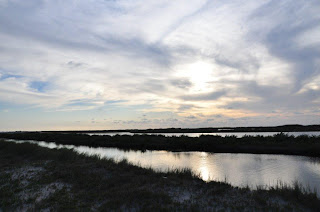 |
| View from Elmer’s Island Wildlife Refuge |
As the sun settled into the evening sky, we made one last stop on our way out at Elmer’s Island Wildlife Refuge. A long, bumpy road snakes through the marsh, taking you from Highway 1 to the sand-covered island. For those with four-wheel drive, you can take your car out onto the sand and park right up at the water’s edge. Even in a Jeep, though, we chose to play it safe and stop at the island’s entrance. We took one last leisurely walk, marveling at the man-of-wars washed up on shore, before snapping a few parting pictures of pelicans flying over the sunset.

by admin | Mar 14, 2012 | Greater New Orleans
Beyond Lake Pontchartrain and Covington, out past sprawling plant nurseries, lies the Global Wildlife Center in Folsom. We made the trek to the far reaches of the Northshore to see the more than 4,000 exotic animals that reside here at this 900-acre wildlife preserve.
 |
| Wagon tour of the Center |
As we drove alongside the property, our anticipation grew as we saw the animals frolicking in the fields before us. When our car turned in the main gate and crossed over the cattle guard, Charles thrust my iphone back into my hands to focus his full attention out the window. Dozens of wild animals walked slowly by, creatures we’d never seen before – not even in storybooks.
We approached the Visitor’s Center, thinking we’d buy tickets for the 1 p.m. tour and eat our PB&J sandwiches by the koi pond while we waited. It turned out the noon tour leaves at a quarter after, though, so we dragged the kids out of the gift shop and boarded the last in a string of covered wagons. Thinking we were on a train, Charles bounced about shouting “All Aboard!” while August clung to me in fear of all the new people around him.
As the “train” lurched forward, though, and we entered the animals’ realm, they both were overcome with pure and utter joy. Armed with our bucket of feed, we were shoveling cups of food into the animals’ mouths, while August was literally squealing with delight. If I hadn’t held him back, I’m almost positive the child would have jumped right in the middle of those four-legged grazers.
 |
| Bactrian Camel |
The numbers were astonishing, and the varieties of colors and types purely amazing. From the African kudus with their spiraled antlers and the two-humped bactrian camels to the ostrich-like rheas and the frisky pere david deer, we fed, pet and giggled at them all. While the giraffes were standoffish, the zebras were overjoyed with us and begged for our attention. The gentle llamas ate feed right out of my hand, while other animals ran away with the cups they were supposed to be eating out of.
A strong wind blew throughout the thrilling ride, and by the last ten minutes of the hour and a half tour, the boys were (for once in their lives) exhausted. That in itself is a rare feat to accomplish. We topped the trip off by feeding the giant koi and catfish living in the picnic area’s pond while scarfing down our sandwiches.
 |
| Bogue Chitto River |
It was a successful day, and we drove away with full intentions to head back home in triumph. But Charles gave his best puppy-dog look, and with his newly purchased elephant in hand, pleaded for us to continue the adventure. Paul and I are both suckers for that, and after a quick glance at the map, decided to swing past the state’s newest state park – Bogue Chitto. We drove the park’s loop, taking in the scenic views of the gorge and the Bogue Chitto River while letting the car’s movements lull August through an afternoon nap.
As we turned the last curve to exit the park, the toddler awakened and we used the opportunity to hike the gorge trail that had been beckoning to us since we first saw it. A path of leaves and pine needles led the way through the woods to stairs leading deep within the gorge. At the bottom, a boardwalk snaked around through a much wetter landscape, and lizards fled our every step. With lightning speed, Charles actually caught one and vowed to never let it go. Fortunately, the animal was resourceful and squirmed his way free. As the tears came rushing down, we decided the outing was over, and headed home to recoup and plan for the next adventure.
 |
| Stairway into the state park’s gorge |













